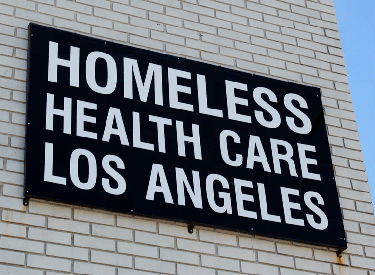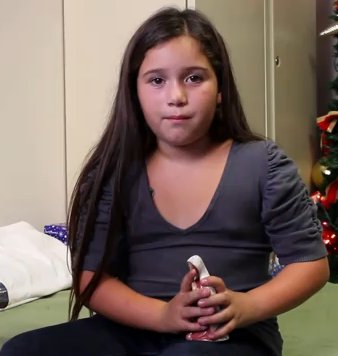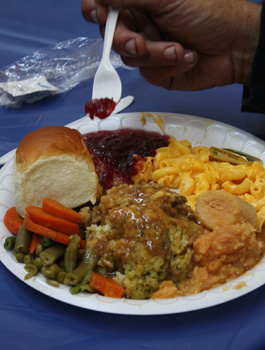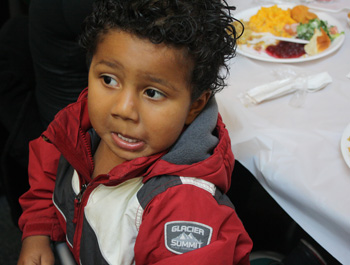
From left to right: LaToya Alvarez, Latrina Wilcher, and Zachary Greenblott volunteer their fine cooking skills for a unique audience. | Anna-Cat Brigida
Once a month Latrina Wilcher goes to Skid Row to hand out slices of cake and pie in heart-shaped boxes. Her goal is to help the homeless people in Los Angeles “one pastry at a time.”
“These treats are not the healthiest in the world, but it costs money to get a cupcake or cookie,” said Wilcher, a South L.A. native. “So I thought, ‘OK, I’m going to give them something that would take them a lot to get somewhere else.” [Read more…]









 The clients who walk through the doors of Homeless Healthcare Los Angeles share many of the same stories: homeless, jobless, struggling with addictions, estranged from family or friends who could support them through addictions and medical crises.
The clients who walk through the doors of Homeless Healthcare Los Angeles share many of the same stories: homeless, jobless, struggling with addictions, estranged from family or friends who could support them through addictions and medical crises.
 On the Sunday after Thanksgiving, the temperatures downtown dipped into low 40′s. In Pershing Square, Angelinos glided around a skating rink which is ringed by trees decorated with Christmas lights. Nearby, a small line of L.A.’s down-and-out population formed up for a free dinner. The smell of greens and beans was in the air along with holiday music as a band of volunteers dished out the food. The volunteers brought with them large vats of food, along with hot sauce, plates and water, but one thing they didn’t bring with them is bombs.
On the Sunday after Thanksgiving, the temperatures downtown dipped into low 40′s. In Pershing Square, Angelinos glided around a skating rink which is ringed by trees decorated with Christmas lights. Nearby, a small line of L.A.’s down-and-out population formed up for a free dinner. The smell of greens and beans was in the air along with holiday music as a band of volunteers dished out the food. The volunteers brought with them large vats of food, along with hot sauce, plates and water, but one thing they didn’t bring with them is bombs. Some chapters actually do end up serving meat which is not encouraged because of health and food safety reasons. Aaron Linas, another volunteer, added that some chapters are more overtly political than others. He said some chapters will bring literature when they hand out food, but the L.A. chapter is not as political as those ones.
Some chapters actually do end up serving meat which is not encouraged because of health and food safety reasons. Aaron Linas, another volunteer, added that some chapters are more overtly political than others. He said some chapters will bring literature when they hand out food, but the L.A. chapter is not as political as those ones. Kiera was easily singled out for stardom during her two months living at the Union Rescue Mission on Skid Row. After stunning staff during a public speaking workshop, Kiera was chosen to tell the story of Christmas on behalf of the mission.
Kiera was easily singled out for stardom during her two months living at the Union Rescue Mission on Skid Row. After stunning staff during a public speaking workshop, Kiera was chosen to tell the story of Christmas on behalf of the mission.  And on Saturday afternoon, Bales joined 300 volunteers in providing a Thanksgiving meal to an estimated 3,500 of Skid Row’s hungry.
And on Saturday afternoon, Bales joined 300 volunteers in providing a Thanksgiving meal to an estimated 3,500 of Skid Row’s hungry.  This year’s celebration differed from past ones in its location. Bales said it is usually held on San Pedro Street, but due to inclement weather, the celebration was moved inside.
This year’s celebration differed from past ones in its location. Bales said it is usually held on San Pedro Street, but due to inclement weather, the celebration was moved inside.






